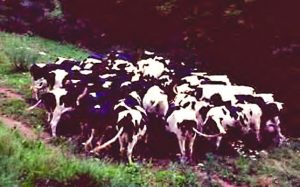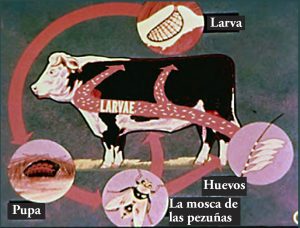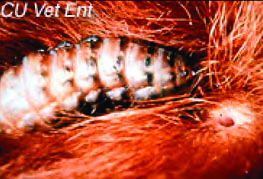Happy cows. More milk. Now let’s try it in Spanish: Vacas felices. Más leche.
Pests can pack a wallop to a dairy farmer’s bottom line, costing between five and 20 percent of lost production. For every 100 cows you’ve got (and most farmers have many more) that can run to the tune of $23,000 to 95,000 per year. Of course, these estimates are based on data that can vary from region to region and year to year.

Before we say more about cows or our organic guides, though, let’s talk about people — namely the people who do the work. Because even on a small farm, the farmer can’t go it alone. Yet it’s hard to find good reliable labor for this difficult, labor-intensive work.

That’s why dairy farmers in New York and across the nation have come to rely heavily on Hispanic workers — workers who are more tech-savvy than you might think, says Cornell Cooperative Extension bilingual dairy educator Libby Eiholser. Eiholser provides training programs and reference materials in Spanish and translated NYS IPM’s Spanish-language organic dairy guide — which has received 130-plus pageviews as of this posting. Now Hispanic workers have the opportunity to become yet more invested in the value of their work.
So … for all those pests that pack a wallop? Now Hispanic workers can open Guía del Manejo Integrado de Plagas (MIP) para los Ranchos Orgánicos and it’s all right there — the pest, the damage … oh, and the unhappy cows. IPM answers are right there too.
Informed workers, happier cows. Trabajadores con conocimiento, de vacas felices. Happy cows, more milk.. Vacas felices, más leche.
Learn more about IPM, livestock, the works.
Photo courtesy Bill Clymers, University of Nebraska-Lincoln.

